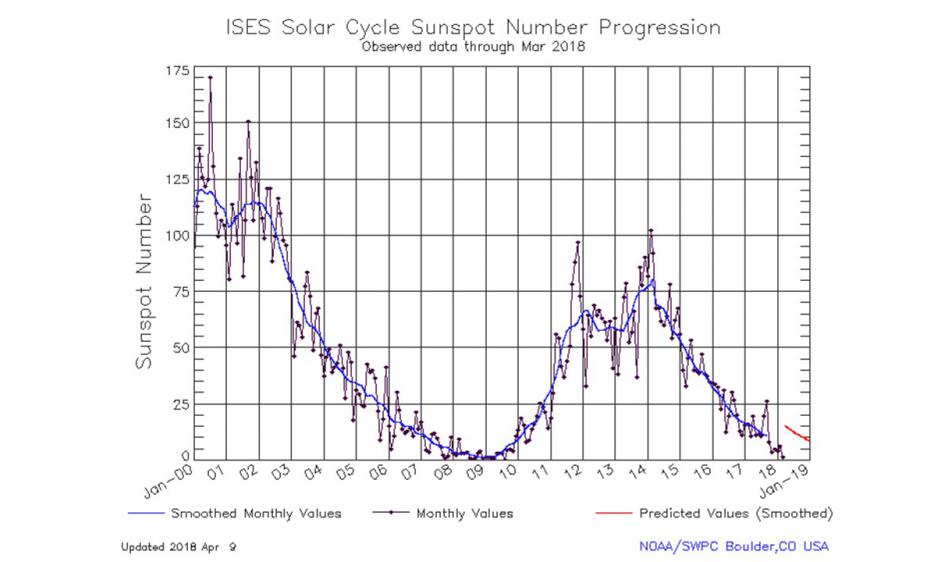
Current solar cycle 24 is declining more quickly than forecast. The smoothed, predicted sunspot number for April to May, 2018 is about 15; however, the actual monthly values have been lower. Will solar minimum be longer than usual or might solar cycle 25 begin earlier? Leading solar and space science experts will convene a meeting in the coming years and attempt to predict solar cycle 25.
The “official” solar cycle forecast includes the month, year, and intensity of that maximum (peak, average sunspot number). The consensus forecast is the result of collaboration by a solar cycle prediction panel of solar and space scientists from around the world. Typically, the panel considers all new, relevant research results, observation trends, and model predictions available when the panel is convened.
Just like hurricane season forecasts, solar cycle predictions have improved; however, there are still notable deviations in prediction versus actual activity. The previous solar cycle prediction panel’s forecast for solar cycle 24 called for a maximum average sunspot number of 90 to occur in May, 2013. After looking at the actual sunspot numbers and solar activity, it was determined the solar cycle 24 maximum was reached in April, 2014 and peaked at an average sunspot number of 82. While the peak value was within the expected range of error, the maximum occurred significantly later than the panel’s prediction.
We will update our SWPC web page with information about the Solar Cycle 25 Prediction Panel’s prediction panel meeting as it approaches, and any predictions as they’re issued.